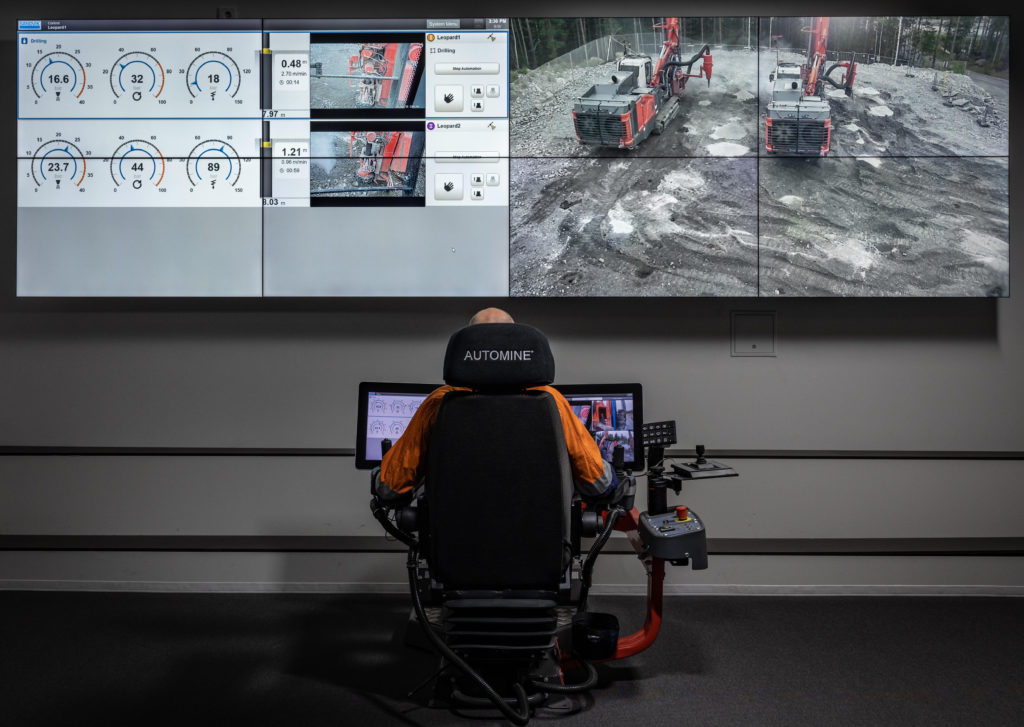Maximizing potential: The importance of effective equipment training and development

Sandvik’s Rotary Drilling Division will soon include another training technique to its repertoire—simulators, in a constantly evolving training technique.
Training operators on new equipment can start while Sandvik is on-site assembling the equipment with the Digital Driller. “We can introduce to them how the machine should function,” said Keith Wallace, technical training manager. “It’s just another key piece to the puzzle.”
The company has also created a suitcase simulator that the sales team can set up and use it in meetings to demonstrate and let their customers see it.
Joseph Troy, technical trainer, said the initiative is a good introduction in a fun way and in a learning safe environment.”
The simulator was introduced at a customer day with several people from Nevada gold mines and the software is currently in the final testing stage and will be deployed to offices in Canada, Brazil, and Kazakhstan shortly. “There’s a big need for it,” Wallace said.
Pre-training with the simulator improves safety as an operator gets familiar with the equipment functionalities, supervised by an experienced trainer nearby, prior to entering the production environment.
The simulator is one of the many training options Sandvik offers. And training begins with its own employees from day one. The company opened the Sandvik Training Academy in May 2022. It is 3,600 square feet of shop space equipped with cranes, grinders, hydraulic presses, etc.— all the same tools that are in the assembly area. After onboarding, employees are sent to the academy so they can assemble items in a safe environment, ask questions and make mistakes. It removes the pressure of being on the actual floor.
“The idea is, from day one, we try and equip our assembly staff to be more successful on our shop floor,” Wallace said. “We are trying to take away some of that newness and set them up for success.”
Troy trains them face to face and they also offer safety training and an onboarding e-learning package, which is available in a computer lab with eight workstations. One employee said the onboarding was “delivered in about 60 minutes and cleared up a lot of uncertainty.”
Employees can hone their skills and they are seeing these employees move up the ladder in their careers. When the trainers see an employee excelling on the floor, they will bring them in for additional training. All their competencies are tracked to aid in that career progression.
An assembler was introduced to some front-line personnel and ended up getting a job and moving to Minnesota. “For us, seeing that career progression is just awesome,” Wallace said. “It’s changing people’s lives.”
The company also offers mentorships, which weren’t always available. “There are dedicated people who are focused on improving this person’s competencies and skills,” Troy said. This began last spring and is growing. “We are changing how we look at developing our workforce.”
Patricia Bambace, e-learning developer, agreed and said it is a coach-friendly atmosphere. “Our training academy has been focusing on creating a shift to that learning culture within manufacturing,” she added.
The company also recently held its first technology conference back in December. The five-day conference was held for frontline employees from seven different regions/sales areas. The focus was to build a foundation of knowledge that will improve the frontline support for the technology components that are quickly being received and requested by the end-user.
Most of the training was blended with theory and hands-on applications. The conference was supported by Technical Services, Engineering, and Automation teams. The conference received such positive feedback that they are holding another training in March.
“The networking and the team building and all that goes along with the face-to-face training,” Wallace said. “It’s very powerful for us because we are such a huge global organization. I’m trying to link these key players from all around the world.”
The company also understands that everyone learns differently. So, they offer online training as well. “It’s repeatable and people can attend that at their own pace,” Wallace said. “And they can reach it from anywhere in the world. All of our e-learning is set up to function on a phone, a tablet, a desktop, whatever device you may use.”
The market is receiving e-learning extremely well. It’s also a resource that is always available. Employees can go back to a training if they have an issue on a rig and reference it to help diagnose the problem.
Bambace said it’s important to look at the employee and see what approach would work best for them: audio narration, reading and seeing photos, videos, etc. The eLearning environment also takes into account individual learning styles and optimizes traditional classroom training.
E-learning is not only available to employees but customers as well. The customers have options when it comes to training: face-to-face, virtual and on-site. Customers can also choose a blend of all three.
Sandvik can tailor its training packages to the needs of the customer. One customer in Wyoming needed a local Sandvik representative to travel to the site on three separate occasions to train three different crews on two different drill models. The company can’t afford any downtime and Sandvik will accommodate them. “We said, OK, what do you need?” Wallace said.
“A poorly trained operator can affect the entire machine,” Wallace said. Proper operator training affects the entire system, from productivity numbers to creating technical problems.
All the types of training that Sandvik offers touch on each other and complements one another, from the beginning with the onboarding of assembly employee to the shop floor, pushing it to its front-line personnel, such as sales and support representatives, all the way up to the end user. “All three pieces of the puzzle are in an effort to make Sandvik successful,” Wallace said. “The better workforce that we have, the better our frontline, the better experience our customer has.”
Employees get the proper training on assembly procedures, safety, tool selection, corporate compliance, etc. Then the front line is trained so they can assist customers with commissioning, troubleshooting, and maintenance. Lastly, they offer customer-specific training to make sure they understand how to properly operate and maintain their equipment.
“That’s what the vision is now— a whole circle approach to training, from those working on the floor to those who are maintaining or operating the rigs out in the field,” Bambace said.
Wallace has a vision of expanding his training team and expanding their offerings. Just a few years ago, training was a one-man job. “I would like to grow an entire training program, not just for our products, but all Sandvik products,” he added.
More News
{{ commodity.name }}
{{ post.title }}
{{ post.date }}



Comments